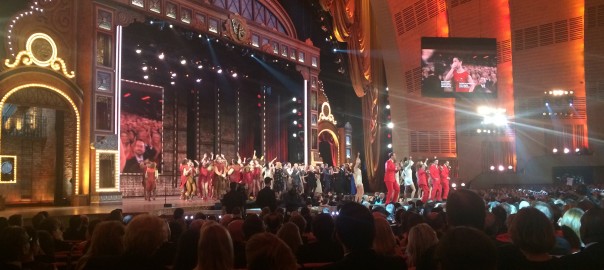In spite of all the energy marketers are dedicating to harnessing the power and promise of new media, America remains a nation firmly entrenched in front of its television set. There remains no better way to reach a large, mass audience than by advertising on this time-honored medium. But while the incredible reach of TV advertising is alluring, the cost is often prohibitive to book publishers. Cable channels can provide a cheaper, more targeted alternative to network buys, but even this requires a significant investment that is not always possible for publishers with large lists and limited marketing budgets.
In our ongoing search for new and more effective ways to advertise books, Verso is working with a new media partner that specializes in promotional television sponsorships. Extremely cost efficient and providing tremendous reach and frequency for a relatively small out of pocket, these “sponsorships” are essentially remnant ad space offered on a specific cable provider on a per market basis. For example, a recent Verso campaign purchased both Verizon Fios and RCN in NYC and a different campaign purchased Comcast in San Francisco and Cox in Washington DC. Unlike true remnant inventory the spots provided will always air between 6am to midnight. Furthermore, our most recent campaign (targeting adults 50+) saw our spots running on highly rated and commercial programming such as Anderson Cooper 360, Larry King Live, Glenn Beck, The Dog Whisperer, Man vs. Wild, Desperate Housewives (Lifetime) and Grey’s Anatomy (Lifetime).
The chart below highlights the exceptional efficiency of these promotional buys:
Our campaigns have paid high dividends with strong returns on investment. A December ‘09 campaign saw a $21k spend across five major markets yield $238k-worth of inventory and almost 14 million impressions. A smaller campaign in January ’10 saw a $7k spend in a single market yield $170k worth of inventory and almost 7.8 million impressions.
The nature of the promotional model does not permit for precise demographic or program specific targeting. However, by relinquishing this bit of control from a TV campaign we are able to dramatically expand the reach and frequency of our message. Whether as a vehicle for expanding an existing TV campaign’s audience or as a means of getting a book with a small budget in front of an otherwise impossible number of eyeballs, promotional TV offers a unique solution for publishers.
By Dan Sharkey
In spite of all the energy marketers are dedicating to harnessing the power and promise of new media, America remains a nation firmly entrenched in front of its television set. There remains no better way to reach a large, mass audience than by advertising on this time-honored medium. But while the incredible reach of TV advertising is alluring, the cost is often prohibitive to book publishers. Cable channels can provide a cheaper, more targeted alternative to network buys, but even this requires a significant investment that is not always possible for publishers with large lists and limited marketing budgets.
In our ongoing search for new and more effective ways to advertise books, Verso is working with a new media partner that specializes in promotional television sponsorships. Extremely cost efficient and providing tremendous reach and frequency for a relatively small out of pocket, these “sponsorships” are essentially remnant ad space offered on a specific cable provider on a per market basis. For example, for one recent campaign, we purchased both Verizon Fios and RCN in NYC; for another campaign, we purchased Comcast in San Francisco and Cox in Washington DC. Unlike true remnant inventory the spots provided will always air in the strongest dayparts, between 6AM and midnight. Furthermore, our most recent campaign (targeting adults 50+) saw our spots running on highly rated and commercial programming such as Anderson Cooper 360, Larry King Live, Glenn Beck, The Dog Whisperer, Man vs. Wild, Desperate Housewives (Lifetime) and Grey’s Anatomy (Lifetime).
The chart below highlights the exceptional efficiency of these promotional buys:

Continue reading →







